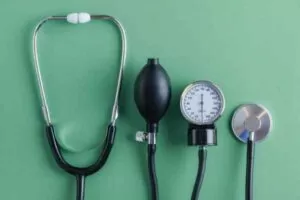Medical Imaging and CT Scanners’ Role in the Evolution of Medicine

The area of scientific imaging has witnessed an exceptional evolution over the years, with developments in technological know-how leading to expanded diagnostic abilities and affected personal care. Among the groundbreaking innovations, CT scanners have performed a pivotal function in revolutionizing scientific imaging.
In the past, scientific imaging mainly relied on X-rays to supply two-dimensional pix of the human body. While X-rays had been instrumental in diagnosing fractures and figuring out some abnormalities, they had boundaries in visualizing interior buildings in detail. This gave upward thrust to the want for a greater state-of-the-art imaging modality that ought to provide a complete view of the body.
The development of CT scanners in the Nineteen Seventies marked a sizable leap forward in clinical imaging. Computed Tomography, delivered the thought of cross-sectional imaging. By combining X-ray science with laptop processing, CT scanners produced unique 3-dimensional snapshots of the body. This development allowed healthcare gurus to visualize anatomical buildings with unparalleled precision and accuracy.
CT scanners shortly won a reputation for their capacity to notice and symbolize a large variety of scientific conditions. They performed an indispensable function in diagnosing tumors, vascular diseases, neurological disorders, and trauma-related injuries. The special photographs produced by means of CT scanners enabled healthcare carriers to make correct diagnoses, format terrific treatments, and reveal the development of interventions.
Over time, developments in CT scanner science have led to extended photograph quality, decreased scan times, and better diagnostic capabilities. Multidetector CT (MDCT) scanners and dual-energy CT (DECT) scanners have in addition improved the scope of CT imaging, enabling higher visualization of complicated anatomical buildings and elevated differentiation of tissues.
Today, these have proceeded to be quintessential devices in clinical imaging, using developments in healthcare. With their potential to furnish specific and complete imaging, CT scanners have revolutionized the field, enabling early detection, guiding therapy decisions, and subsequently enhancing affected person outcomes.
An Overview of CT Scanners: A Peek into the Technology

The primary precept of Computed Tomography scanners includes the use of an X-ray tube and a detector array. The affected person is located on a desk that strikes through a round gantry, which houses the X-ray tube and the detector array. As the desk moves, the X-ray tube emits a skinny beam of X-rays that rotates around the patient’s body. The detector array collects the X-rays that omit thru the physique from more than one angle.
The accumulated X-ray information is then dispatched to a computer, which makes use of complicated algorithms to reconstruct the facts into specified cross-sectional images. These images, referred to as tomographic slices, supply a comprehensive view of the anatomical buildings inside the body, allowing for particular analysis and cure planning.
One of the key developments in CT scanner science is the introduction of multidetector CT (MDCT) scanners. These scanners function with more than one row of detectors, which allows the acquisition of large volumes of information in a single rotation. This affects quicker scan instances and elevated photograph resolution.
Dual-energy CT (DECT) scanners are another outstanding improvement in CT technology. They make use of two exclusive X-ray power stages to differentiate between more than a few tissue types, improving the potential to perceive and signify abnormalities more accurately.
The fundamentals of CT scanner technological know-how have revolutionized scientific imaging by way of presenting unique and complete visualizations of the human body. This non-invasive imaging modality has turned out to be an essential device in diagnosing and monitoring a variety of clinical conditions, contributing to extended affected person consequences and more desirable healthcare practices.
How Computed Tomography Scanners Outperform Other Imaging Modalities?

In the field of radiology, CT scanners are commonly used to evaluate and diagnose conditions affecting the chest, abdomen, and pelvis. They play a crucial role in detecting and characterizing tumors, identifying organ abnormalities, and assessing the extent of trauma-related injuries.
In cardiology, CT scanners are utilized for non-invasive imaging of the heart and blood vessels. Cardiac CT scans provide detailed images of the coronary arteries, helping identify blockages and assess cardiac function. This aids in diagnosing conditions such as coronary artery disease, and cardiac structural abnormalities, and evaluating the effectiveness of interventions like stent placements.
In neurology, CT scans are used to evaluate conditions such as stroke, brain tumors, and intracranial bleeding. They help identify abnormalities in the brain’s structure, detect lesions, and assess the impact of traumatic brain injuries.
CT scanners also find applications in orthopedics, where they provide detailed images of bones, joints, and soft tissues. They assist in diagnosing fractures, evaluating joint disorders, and planning orthopedic surgeries.
Furthermore, CT scanners have proven valuable in oncology by aiding in tumor staging, treatment planning, and monitoring response to therapy. They play a significant role in assessing the size, location, and spread of tumors throughout the body.
Computed Tomography Scanners: Increasing Diagnostic Possibilities

CT scanners have revolutionized clinical imaging and multiplied diagnostic probabilities throughout a number of clinical specialties. Their versatility and capability to seize designated cross-sectional pictures have made them priceless equipment in diagnosing. And monitoring a huge variety of conditions.
In the area of radiology, CT scanners are oftentimes used to consider and diagnose prerequisites affecting the chest, abdomen, and pelvis. They play a critical function in detecting and characterizing tumors, figuring out organ abnormalities, and assessing the extent of trauma-related injuries.
In cardiology, Computed Tomography scanners are utilized for non-invasive imaging of the coronary heart and blood vessels. Cardiac CT scans supply distinct pics of the coronary arteries, assisting perceive blockages and verify cardiac function. This aids in diagnosing stipulations such as coronary artery disease, and cardiac structural abnormalities. And evaluating the effectiveness of interventions like stent placements.
In neurology, CT scans are used to consider stipulations such as stroke, intelligence tumors, and intracranial bleeding. They assist in becoming aware of abnormalities in the brain’s structure, discovering lesions, and investigating the effect of anxious intelligence injuries.
CT scanners additionally discover purposes in orthopedics, the place they supply unique snapshots of bones, joints, and gentle tissues. They help in diagnosing fractures, evaluating joint disorders, and planning orthopedic surgeries.
Furthermore, CT scanners have demonstrated precious in oncology by means of assisting in tumor staging, cure planning, and monitoring response to therapy. They play a vast function in assessing the size, location, and unfold of tumors at some point in the body.
Advanced Techniques and Innovations: Pushing the Boundaries of Computed Tomography Scanning

Advanced methods and improvements have pushed the boundaries of CT scanning, bettering its diagnostic capabilities. Multidetector CT (MDCT) scanners, with more than one row of detectors, allow quicker acquisition of records and extended photo resolution. Dual-energy CT (DECT) scanners make use of distinct X-ray strength levels, permitting higher tissue characterization and detection of delicate abnormalities.
Cone-beam CT (CBCT) technological know-how has revolutionized imaging in dentistry and interventional procedures, offering particular 3D pics with minimal radiation exposure. Additionally, spectral CT scanners provide more advantageous tissue differentiation and cloth decomposition for elevated diagnostic accuracy.
Future Outlook: Exciting Developments and Potential of Computed Tomography Scanners
The future of CT scanners holds thrilling tendencies and sizable practicability for advancing clinical imaging. Researchers and engineers are continuously striving to decorate the competencies of CT scanners. One region of a focal point is decreasing radiation dose barring compromising photograph quality, making sure the affected person’s safety. Moreover, developments in AI and deep studying algorithms are being built-in into CT scanners to enhance picture reconstruction. Automate photograph analysis, and help in diagnostic decision-making.
The integration of molecular imaging techniques, such as PET-CT, with CT scanners further expands their diagnostic possibilities. Additionally, the improvement of transportable and compact CT scanners pursuits to make bigger accessibility. And allow imaging in far-off or resource-limited settings. With ongoing lookup and technological advancements, the future of CT scanners holds promise for even greater particularity. And environment-friendly diagnoses, personalized remedy strategies, and multiplied affected person outcomes.
In Conclusion,
CT scanners have emerged as the spine of cutting-edge scientific imaging, revolutionizing the discipline with their potential to supply specific. And complete cross-sectional images. Their purposes span a variety of clinical specialties, enabling correct diagnoses, guiding therapy decisions, and enhancing affected person outcomes. With ongoing developments in technological know-how and techniques. Such as multidetector CT, dual-energy CT, and AI integration, CT scanners. They all proceed to evolve and push the boundaries of scientific imaging.
As the revolution in clinical imaging continues, Computed Tomography scanners continue to be at the forefront. Empowering healthcare specialists with valuable equipment for higher grasp and managing a large variety of clinical conditions.







